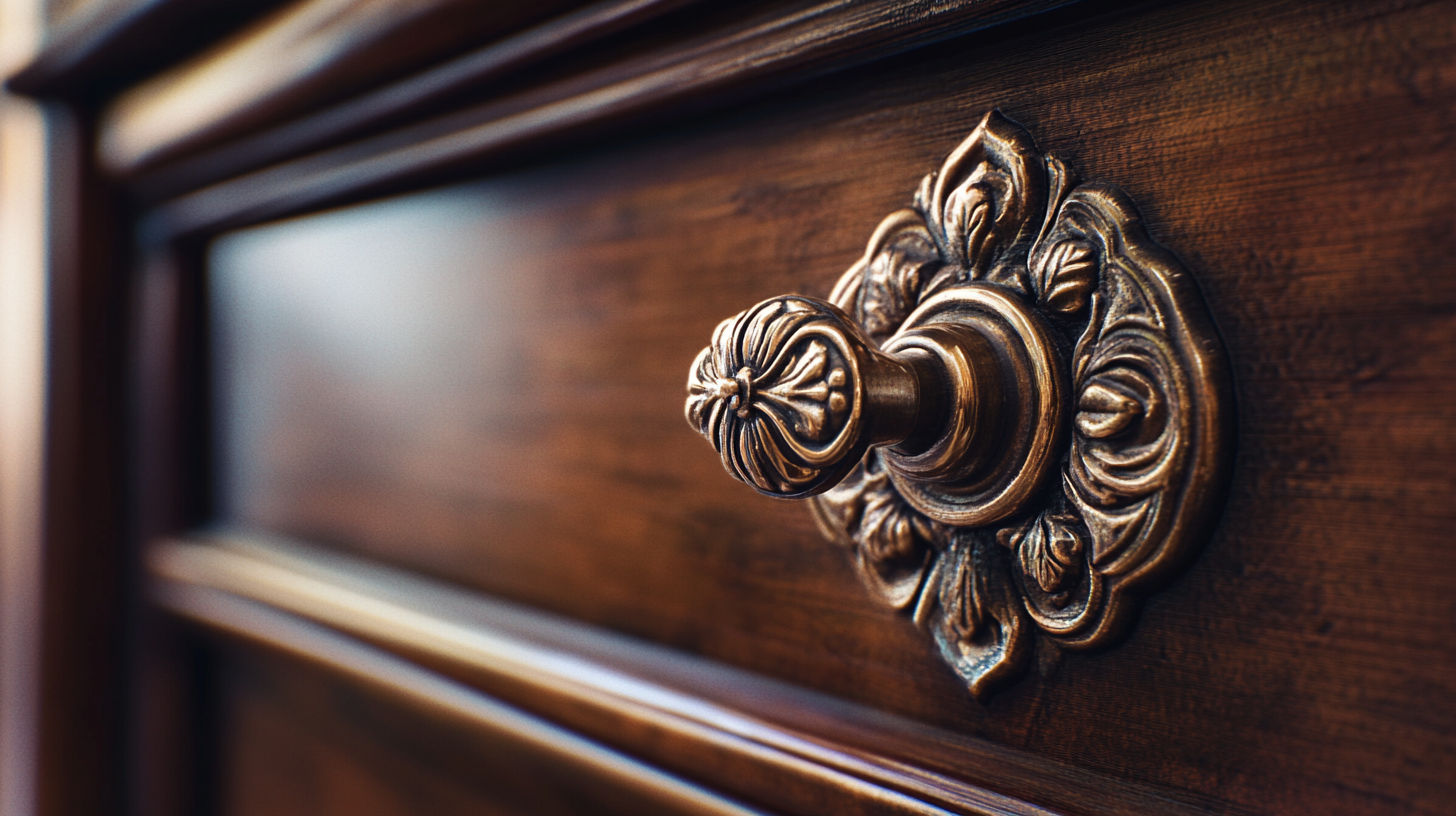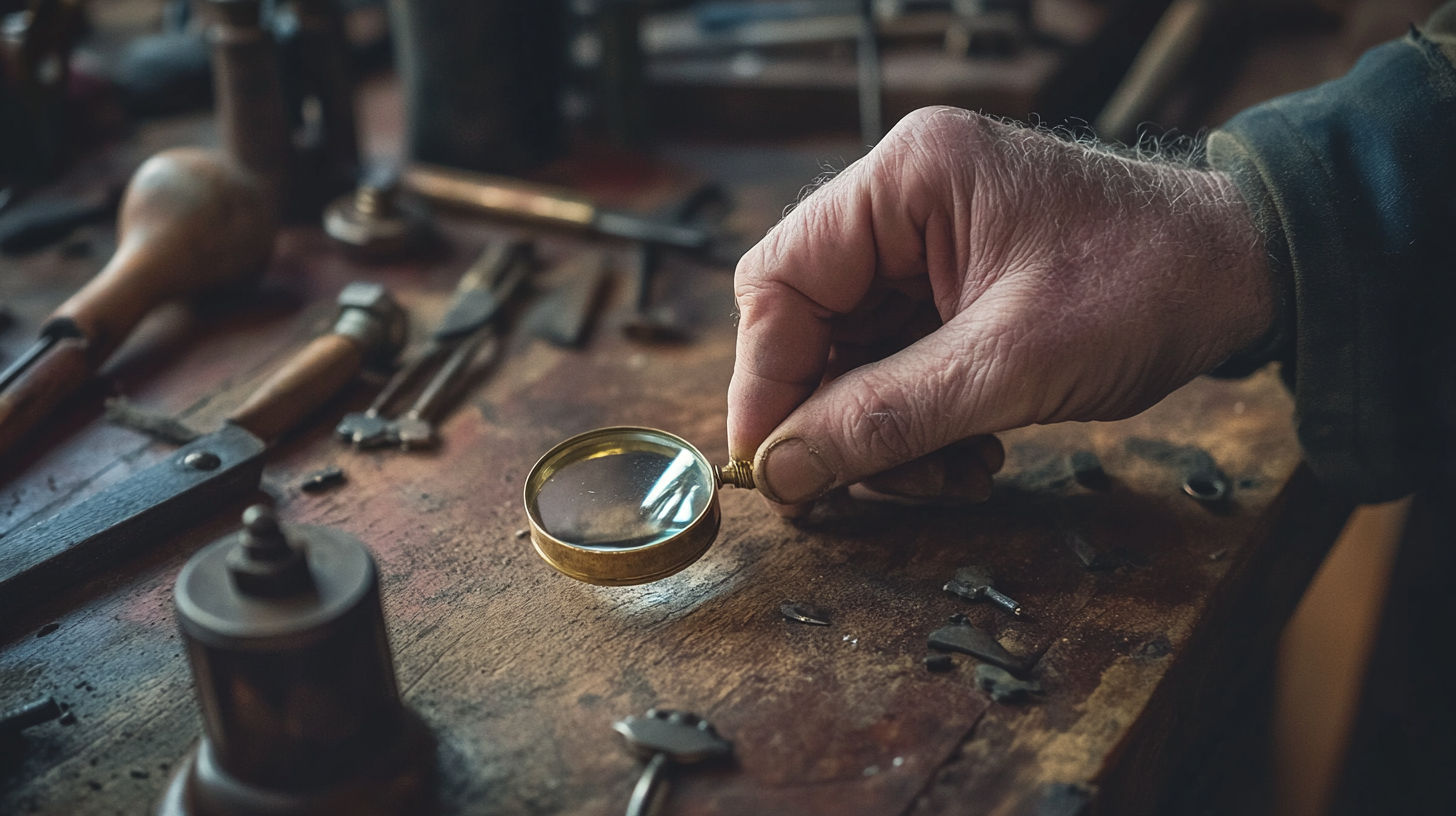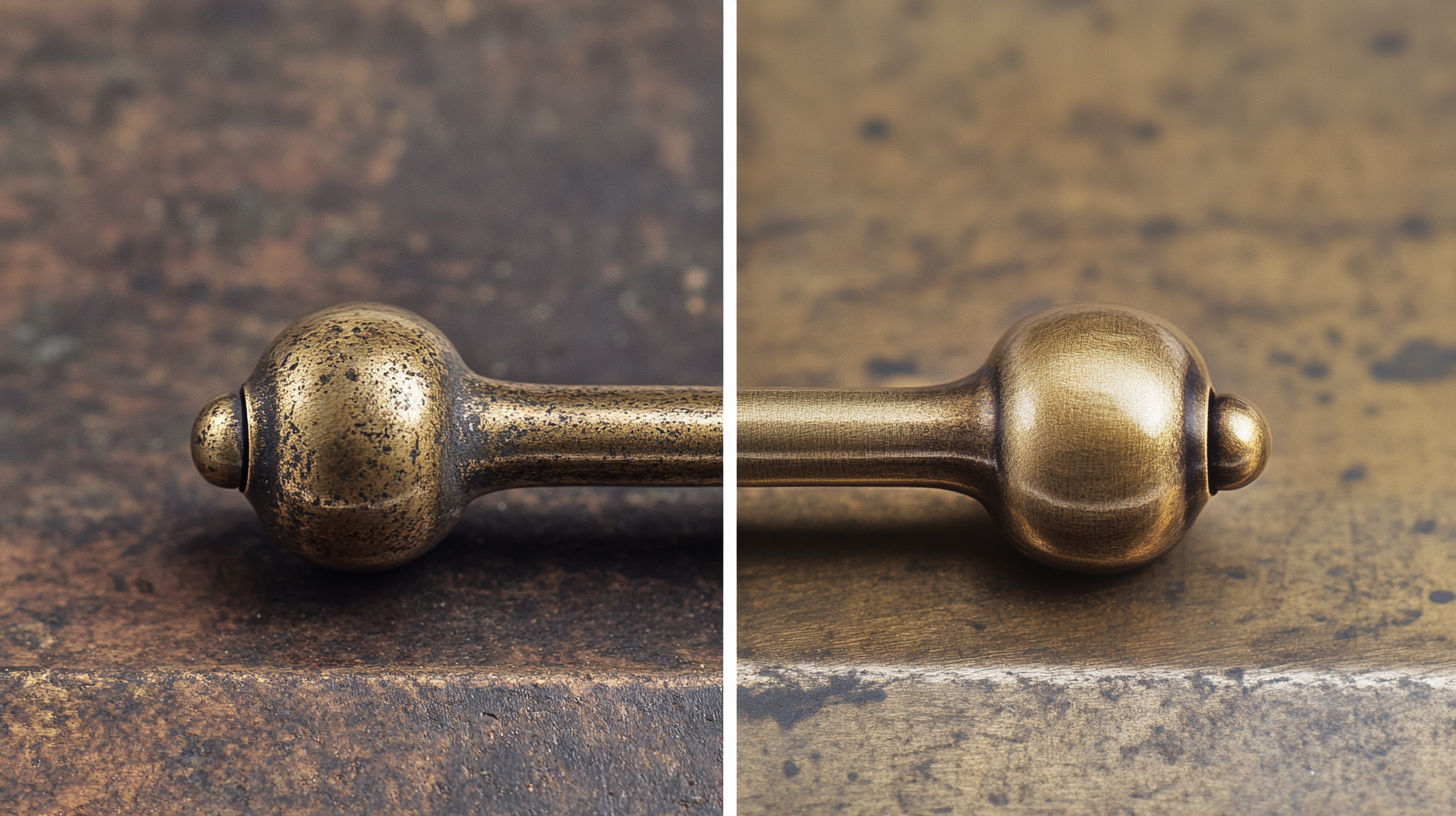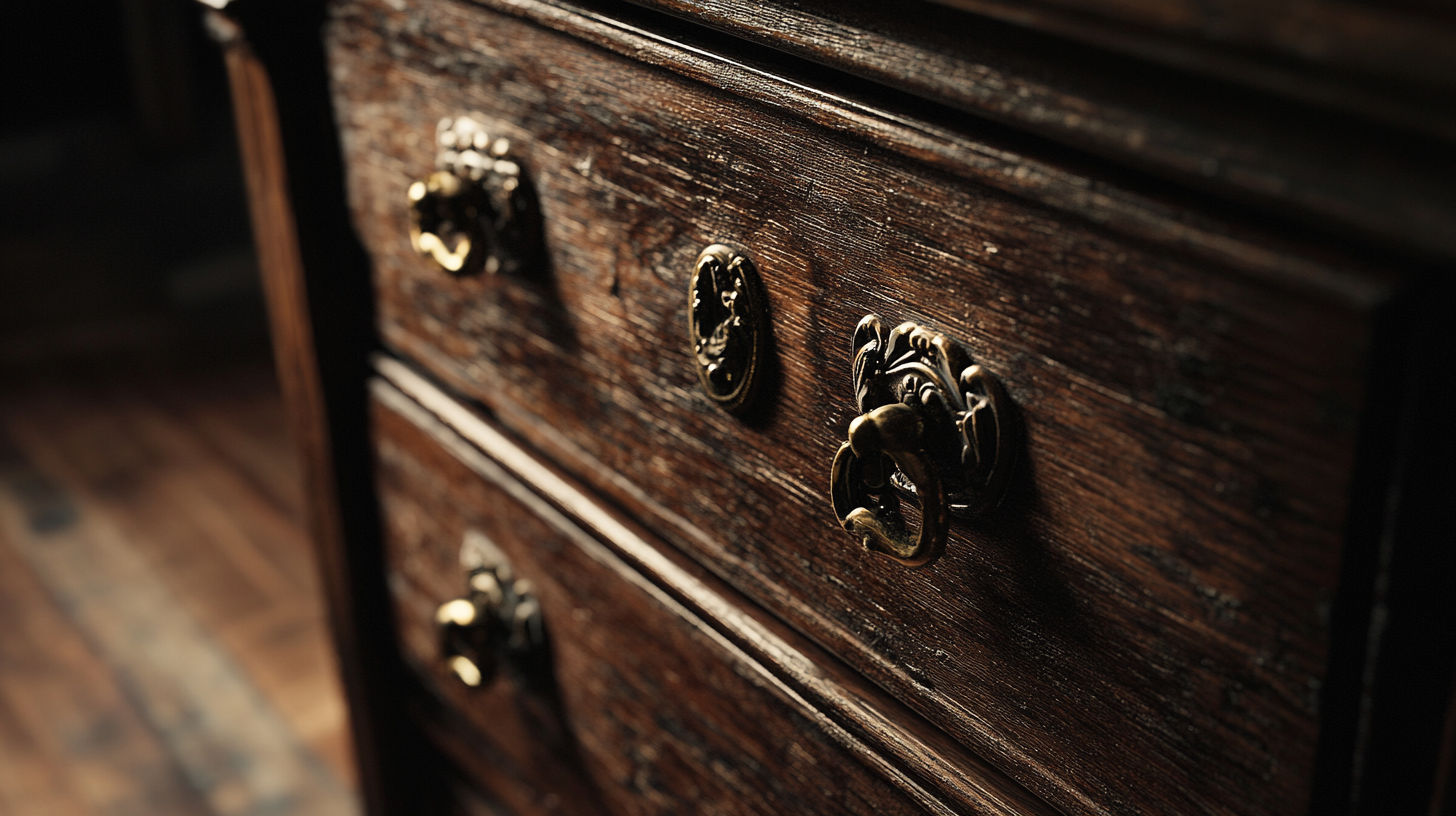
Introduction: Why Hardware Holds the Key to Dating Antique Furniture
Antique furniture tells a story through its design, materials, and craftsmanship. While many collectors focus on style and wood type, hardware elements—particularly handles and drawer pulls—often provide the most reliable clues for accurate identification and dating. These metal fixtures evolved distinctly across different periods, reflecting both technological capabilities and design aesthetics of their time.
For collectors, dealers, and enthusiasts, learning to “read” antique furniture handles is an essential skill. Hardware can reveal not just a piece’s age, but also its authenticity, geographic origin, and sometimes even its maker. Original hardware is like a signature, offering valuable evidence that may confirm or contradict other identification methods.
This comprehensive guide explores how to use handles, pulls, knobs, and other hardware elements to identify and authenticate antique furniture. We’ll examine distinctive characteristics from different periods, common materials, construction methods, and practical techniques for analysis.
Why Hardware is Critical for Dating Furniture
When examining an antique piece, hardware provides key advantages for identification:
Limited Reproduction Window: Unlike wood finishes that could be refreshed or styles that were copied, hardware was typically only produced for specific periods before manufacturing techniques changed.
Regional Distinctions: Hardware styles often varied by country and region, helping pinpoint a piece’s origin.
Technological Markers: The way hardware was made—hand-forged, cast, stamped, or machine-made—reveals much about when it was produced.
Style Evolution: Hardware fashion evolved alongside furniture styles, creating recognizable patterns that help place pieces in their proper context.

Key Hardware Facts for Antique Identification
Identifying Hardware Types Through the Ages
Early 18th Century: The Queen Anne and Early Georgian Period (1700-1750)
The early 18th century saw a transition from the elaborate Baroque style to the more restrained and elegant Queen Anne and Early Georgian designs. Hardware from this period has several distinctive characteristics:
Key Identifying Features:
- Brass bail handles (drop handles) with simple, bat-wing shaped backplates
- Early examples often show hand-hammering marks
- Backplates typically attached with cotter pins or split pins
- Relatively thick, substantial casting with minimal detail
- Surface often shows hand-filing marks when examined closely
During this period, most hardware was individually cast in sand molds, then hand-finished. The handles themselves were typically cast separately from their backplates. This manufacturing process resulted in slightly uneven pieces with minimal fine detail.
Evolution of Antique Furniture Hardware
Early Georgian/Queen Anne
Simple bat-wing backplates with bail handles. Hand-hammered brass with visible tool marks and attached with cotter pins or split pins.
Mid-Georgian/Chippendale
More elaborate backplates featuring rococo designs. Bail handles became more decorative with scrollwork and shell motifs. Still attached with pins.
Federal/Neoclassical
Introduction of round or oval backplates with stamped designs. First appearance of threaded posts and nuts for attachment. Simpler, cleaner designs.
Empire/Regency
Introduction of stamped brass lion heads, rosettes, and classical motifs. More standardized production with improved casting techniques.
Victorian
Highly ornate cast brass with complex patterns. Introduction of white porcelain, ceramic, and glass knobs. Machine-made with consistent dimensions.
Mid to Late 18th Century: Chippendale and Federal Period (1750-1800)
As furniture designs became more elaborate under the influence of Thomas Chippendale and later Federal styles, hardware followed suit:
Key Identifying Features:
- More intricate backplates with rococo and later neoclassical motifs
- Introduction of circular and oval backplates in the Federal period
- Finer casting with more detailed decoration
- Hardware begins showing stamped designs rather than just casting
- First appearance of threaded bolts for attachment (1780s onward)

By examining the back of hardware, you can spot important clues:
- Early handles (pre-1780s) typically have cotter pins or split pins
- Federal period (1780s-1800s) introduced the first threaded nuts
- The threading itself became more consistent and finer toward the 1800s
Hardware Value by Period
| Category | Price Range | Notes |
|---|---|---|
| Early 18th Century (Queen Anne) | $100-$300 | Original condition with patina |
| Mid-18th Century (Chippendale) | $150-$350 | Elaborate backplates command premium |
| Federal/Neoclassical | $80-$250 | Simple oval backplates less valuable |
| Empire/Regency | $75-$200 | More common due to increased production |
| Victorian | $40-$150 | Common but elaborate examples valuable |
Note: Price ranges are approximate and can vary based on condition, rarity, and market demand.
Early 19th Century: Empire and Regency Periods (1800-1840)
The Empire period, inspired by Napoleonic France, and the English Regency style introduced new hardware elements:
Key Identifying Features:
- Lion head and ring pulls gained popularity
- Stamped rosettes and classical motifs (laurel wreaths, anthemions)
- Larger brass backplates with embossed decorations
- More consistent threading on mounting hardware
- First introduction of stamped sheet brass rather than cast pieces
This period saw significant improvements in metallurgy and manufacturing, leading to more consistent hardware production. While some pieces remained hand-finished, the industrial revolution began influencing hardware production with early machinery.
Victorian Era Hardware (1840-1900)
Victorian furniture hardware is remarkable for its diversity and ornamentation:
Key Identifying Features:
- Highly decorative cast brass pulls with intricate patterns
- Introduction of white porcelain, ceramic, and glass knobs
- Combination of materials (brass with ceramic or glass elements)
- Machine-stamped backplates with consistent dimensions
- Drop handles often featuring ornate casting with floral motifs
- Eastlake style (1870s-1880s) introduced angular, geometric patterns
This era saw the full industrialization of hardware manufacturing, with mass production techniques replacing handcrafted methods. Hardware became more standardized, though quality varied significantly.

Hardware Authenticity Assessment
Material Analysis: What Hardware Composition Reveals
Brass: The Most Common Hardware Material
Brass has been the predominant material for quality furniture hardware since the 18th century, but its composition and appearance changed over time:
Early Brass (Pre-1750):
- Higher copper content giving a warmer, redder tone
- Often shows hand-hammering and file marks
- Typically thicker and more substantial
- Surface patina develops distinctive dark areas
Mid to Late 18th Century Brass:
- More refined alloy with better casting properties
- Slightly more yellow in tone than earlier brass
- Shows file marks but more consistent casting
- Often develops greenish patina in recessed areas
19th Century Brass:
- More standardized alloy composition
- Machine production creates smoother surfaces
- Often shows stamping rather than casting marks
- May be thinner, especially in Victorian mass-produced pieces
Looking closely at the brass with a magnifying glass can reveal manufacturing techniques—hand-filed surfaces have tiny parallel marks, while machine-finished surfaces show circular patterns.
Other Hardware Materials
While brass dominated, other materials provide valuable dating clues:
Iron Hardware:
- Common in country furniture and utility pieces
- Early examples (pre-1800) entirely hand-forged
- Surface typically shows hammer marks and irregularities
- Often blackened or with simple shaped ends
Wood Knobs:
- Common on country and primitive furniture
- Usually made of hardwood, often matching furniture wood
- Simple turned designs in early periods
- More elaborate turning patterns in Victorian era
Porcelain and Ceramic Knobs:
- First appeared around 1830s
- Became extremely popular in Victorian era
- Early examples typically plain white
- Later Victorian examples often featured transfer-printed designs or hand-painting
Glass Knobs:
- Primarily an American innovation from 1820s-1850s
- Typically clear or colored pressed glass
- Often found on Empire and Federal revival pieces
- Distinctive mold seams visible on many examples

Hardware Shadow Analysis: A Key Authentication Tool
One of the most valuable techniques for hardware authentication is examining areas where original hardware protected the wood surface from:
- Light Exposure: Areas under backplates often show different coloration
- Polishing: Wood protected by hardware often lacks polish buildup
- Wear: Protected areas show original wood surface texture
When examining a piece:
- Look for shadows or outlines that match the current hardware
- Check for additional holes or marks suggesting hardware replacement
- Compare coloration under backplates to exposed surfaces
- Examine edges where handles meet wood for consistent wear patterns
Hardware shadows are particularly important because they’re extremely difficult to fake authentically. Even skilled restorers struggle to recreate the natural patina differential caused by decades or centuries of hardware protecting specific wood areas.
Hardware Attachment Methods
The way hardware is attached to furniture evolved significantly and provides crucial dating evidence:
Pre-1750 Attachment:
- Split cotter pins hammered through backplate and wood
- Pins often handmade with irregular heads
- Backplates rarely perfectly centered due to hand-fitting
1750-1800 Transition Period:
- Continued use of cotter pins, but more uniform
- Early threaded posts and nuts appearing (1780s onward)
- Screw posts initially hand-threaded with irregular patterns
19th Century Innovations:
- Machine-cut threads on bolts and nuts
- Introduction of standardized nuts and washers
- Screws replacing pins for many applications
- Machine-cut slots in screws (replacing handmade)
Victorian and Later:
- Fully standardized machine-made fasteners
- Consistent threading and dimensions
- Often used multiple smaller screws rather than center bolts
- Introduction of specialized fasteners for specific hardware types
Practical Examination Techniques
When evaluating furniture hardware, follow these steps for thorough analysis:
1. Photographic Documentation
Before handling, photograph hardware from multiple angles:
- Front view showing design details
- Side view showing profile and projection
- Back view showing attachment method
- Close-ups of any marks, stamps, or distinctive features
- Wide shots showing placement on the furniture
2. Visual Inspection
Examine the hardware without removing it:
- Note the overall style and decorative elements
- Check for consistency in patina across all hardware pieces
- Look for evidence of repairs or replacements
- Examine wear patterns—are they consistent with the piece’s use?
- Check shadows and outlines around hardware
3. Careful Removal (When Appropriate)
If safe and necessary:
- Use proper tools to avoid damage to hardware or wood
- Document the removal process with photos
- Note any markings hidden under backplates
- Examine all components (handles, backplates, fasteners)
- Check for maker’s marks or numbers on reverse sides
4. Close Examination of Construction
Look for manufacturing clues:
- Evidence of hand vs. machine production
- Filing marks, casting flaws, or mold seams
- Thread patterns on bolts and screws
- Material composition and quality
- Assembly methods and joinery
Notable Auction Results for Furniture with Original Hardware
| Item | Price | Date | Auction House |
|---|---|---|---|
| Queen Anne Walnut Highboy with Original Brasses | $32,500 | March 2023 | Sotheby's |
| Chippendale Mahogany Chest with Period Hardware | $18,750 | November 2022 | Christie's |
| Federal Secretary Desk with Original Oval Pulls | $12,400 | January 2023 | Skinner Auctioneers |
| Victorian Burled Walnut Dresser with Brass Hardware | $3,800 | July 2023 | Cowan's Auctions |
Note: Auction results represent past sales and may not reflect current market values. Always consult with a professional appraiser for accurate valuations.
Common Reproduction Hardware and How to Spot It
Reproduction hardware ranges from high-quality custom pieces to mass-produced imitations. Here’s how to identify them:
Signs of Modern Reproduction:
Material Composition
- Modern brass often has a brighter, more uniform color
- Reproductions may feel lighter due to thinner metal
- Some modern pieces use plated zinc or other base metals
Manufacturing Techniques
- Machine precision that’s too perfect for the supposed period
- Lack of hand-finishing marks in pre-industrial designs
- Crisp details in areas that would show wear in originals
Fastening Methods
- Modern threading on supposedly early pieces
- Phillips-head screws (not invented until the 1930s)
- Inconsistent attachment methods for the period
Patina and Aging
- Artificially applied patinas with too-uniform discoloration
- Chemical darkening that doesn’t match natural oxidation patterns
- Deliberate distressing that doesn’t match natural wear patterns
Design Accuracy
- Mixing of period elements that wouldn’t appear together
- Proportions that don’t match historical examples
- Simplified designs missing subtle period details
Many furniture restorers use high-quality reproduction hardware when originals are missing. While this practice is accepted, it’s important for collectors and dealers to distinguish between original and replaced elements.
External Resources for Hardware Identification
Historic Handles: Analysing Brassware to Determine Furniture Age
Comprehensive guide from Fine Art Restoration Company exploring how to date furniture through brass handle design styles.
Identifying Genuine Antique Hardware
Detailed resource from LookInTheAttic explaining finishes, markings, and characteristics of authentic antique hardware.
Types of Antique Drawer Pulls With Pictures
Visual guide from LoveToKnow showcasing different styles of antique drawer pulls with identification information.
Wear and Hardware Shadows - Inspecting Drawers for Clues to Age
Expert analysis from RealOrRepro on how hardware shadows and wear patterns help authenticate furniture age.
Tips on How to Date Antique Furniture Hardware
Practical advice from Riwick on assessing furniture hardware age through various techniques.
How To Identify Antique Furniture Styles
Comprehensive overview from Antique Trader on furniture style identification, including hardware characteristics.
Case Studies: Hardware Examples Through the Ages
Case Study 1: Queen Anne Highboy (c.1740)
A maple highboy from Massachusetts features classic early 18th century hardware:
- Simple bat-wing backplates with minimal decoration
- Substantial brass bail handles with visible casting texture
- Attachment via hand-forged cotter pins with irregular heads
- Evidence of hand-filing on backplate edges
- Patina shows dark oxidation consistent with 280+ years of age
The hardware’s simplicity, substantial weight, and attachment method all confirm the period attribution, supporting other evidence from the highboy’s construction techniques.
Case Study 2: Chippendale Chest of Drawers (c.1775)
A mahogany chest displays mid-to-late 18th century hardware characteristics:
- Rococo-style backplates with shell and scroll motifs
- More refined casting with greater detail than earlier examples
- Mix of pin and early threaded attachments (suggesting transition period)
- Consistent brass composition across all handles
- Hardware shadows perfectly match current backplates, confirming originality
This case illustrates the transition period of the 1770s when threaded attachments began appearing alongside traditional methods.
Case Study 3: Federal Secretary Desk (c.1800)
An American Federal secretary bookcase demonstrates the neoclassical shift:
- Oval and round backplates with stamped rather than cast decoration
- Threaded bolts with hand-cut, somewhat irregular threading
- Thinner brass than earlier periods, but still substantial
- Classical motifs including laurel wreaths and urns
- Evidence of original gilding in protected areas
This example shows how Federal period hardware became more refined and standardized, yet still shows evidence of hand craftsmanship in the threading and finishing details.
Case Study 4: Victorian Sideboard (c.1870)
A Victorian walnut sideboard displays typical Late Victorian elements:
- Ornate cast brass pulls with intricate foliate designs
- Combination of brass backplates with porcelain knob centers
- Machine-cut screws with consistent thread pattern
- Evidence of mass production in the consistent sizing
- Some backplates stamped with patent dates, providing exact dating
This example demonstrates the industrial production methods of the Victorian era while still maintaining decorative complexity.
Common Questions About Antique Furniture Hardware
How can I tell if furniture hardware is original or a replacement?
Look for these indicators of original hardware:
- Hardware shadows (protected areas) that perfectly match the current hardware shape
- Consistent patina between the hardware and the surrounding furniture
- Attachment methods appropriate for the period (pins for early 18th century, hand-threaded bolts for late 18th, machine-threaded for 19th century)
- Single set of mounting holes without evidence of additional holes or repairs
- Wear patterns that match the furniture's use and age
Replacements often show inconsistent aging, inappropriate mounting methods, or design elements that don't match the furniture's period.
What's the value difference between furniture with original versus replacement hardware?
Original hardware significantly impacts value, typically adding 30-50% to a piece's market price compared to identical furniture with quality reproduction hardware. For museum-quality or rare pieces, original hardware can increase value by 100% or more.
Even high-quality custom reproductions don't enhance value like original hardware, as authenticity and historical integrity are prime concerns for serious collectors. If replacement is necessary, using period-appropriate antique hardware from another piece (rather than modern reproductions) minimizes value impact.
How do I clean antique furniture hardware without damaging it?
For antique hardware, gentle cleaning preserves value and patina:
1. **For routine cleaning:** Use a soft cloth with mild soap and water, drying thoroughly
2. **For tarnished brass:** A mixture of equal parts white vinegar, salt, and flour made into a paste, applied briefly and rinsed thoroughly
3. **For stubborn dirt:** A soft toothbrush with mild soap for crevices
Avoid:
- Commercial metal polishes that remove patina
- Abrasive cleaners or tools
- Soaking hardware in liquid cleaners
- Harsh chemicals like ammonia or bleach
Remember that the natural patina of age adds value and authenticity to antique hardware. Overly polished hardware that looks new actually reduces value.
Where can I find high-quality reproduction hardware for antique furniture restoration?
For quality reproduction hardware, consider these specialized sources:
- **Horton Brasses** (horton-brasses.com): Hand-crafted period reproductions with historically accurate details
- **Ball and Ball** (ballandball-us.com): Museum-quality reproductions based on historical examples
- **Whitechapel Ltd** (whitechapel-ltd.com): Extensive catalog of period hardware reproductions
- **House of Antique Hardware** (houseofantiquehardware.com): Wide selection of historically accurate reproductions
- **Van Dyke's Restorers** (vandykes.com): Good mid-range options for common styles
For the most authentic restorations, consider salvaged period hardware from architectural salvage dealers or specialized antique hardware dealers who sell individual pieces from damaged furniture.
How can I identify the maker of antique furniture hardware?
Identifying hardware makers requires examining:
1. **Maker's Marks**: Check the back of backplates or inside of handles for stamps, initials, or symbols
2. **Patent Marks**: Some Victorian hardware includes patent dates or numbers
3. **Catalog Comparison**: Compare with period hardware catalogs (many now digitized in museum collections)
4. **Regional Characteristics**: Some regions had distinctive hardware styles (Birmingham, England vs. American manufacturers)
Most pre-1850 hardware lacks maker's marks, as it was often produced by small workshops rather than large manufacturers. Later Victorian pieces more commonly feature identifiable marks or patterns that can be attributed to specific companies like Corbin, Sargent, or Yale & Towne in America, or Kenrick, Cartland, or Collins in England.
What should I do if my antique furniture is missing some of its original hardware?
When dealing with missing hardware:
1. **Document existing pieces** first with detailed photographs and measurements
2. **Search for exact matches** from antique hardware dealers who specialize in individual pieces
3. **Consider period hardware** from the same era (even if not identical) as a better alternative than reproductions
4. **Custom reproduction** as a last resort, using the original hardware as a model
For museum-quality pieces, conservation ethics suggest any replacement should be discreetly marked as new (often with a small dot or date on the reverse) to maintain historical integrity while documenting the restoration.
When only some hardware is missing, it's often better to relocate original pieces to the most visible drawers/doors and use reproductions on less visible areas.
How do furniture hardware styles differ between American, English, and Continental pieces?
Regional differences in hardware provide valuable origin clues:
**American Hardware (18th-19th century):**
- Typically simpler designs than English counterparts
- Often heavier casting in early periods
- Federal period (1780-1820) favored oval and round backplates
- Regional distinctions between New England, Philadelphia, and Southern styles
**English Hardware:**
- More refined casting even in early periods
- Georgian period featured elaborate rococo designs
- Birmingham brass industry dominated production after 1780s
- Regency period (1810-1830) introduced distinctive lion rings and rosettes
**Continental (French, German, Dutch):**
- French hardware often more delicate and ornate
- German pieces typically featured more substantial, sometimes angular designs
- Dutch hardware often incorporated distinctive floral motifs
- Italian furniture frequently used more elaborate and sculptural hardware
These regional characteristics help authenticate furniture and can resolve questions about attributions when furniture style might be ambiguous.
How can I date furniture by looking at the screws used with the hardware?
Screws provide excellent dating evidence:
**Pre-1750:** Few screws used in furniture; most hardware attached with nails or pins
**1750-1800:** Handmade screws with:
- Off-center, uneven slots
- Irregular, hand-filed threads
- Tapered shaft (blunt tip)
- No consistent threading pattern
**1800-1850:** Partially machine-made with:
- Machine-cut slots (more centered)
- Hand-filed threads becoming more regular
- Slight point developing at tip
**1850-1890:** Machine-made with:
- Perfectly centered slots
- Machine-cut consistent threads
- Pointed tips
- Flat heads with even dimensions
**After 1890:** Fully standardized machine screws
**Important:** Phillips head screws weren't invented until the 1930s, so their presence on "antique" hardware indicates modern replacement.
Conclusion: The Lasting Value of Hardware Knowledge
The ability to accurately identify and interpret antique furniture hardware opens up a wealth of information about a piece’s age, authenticity, and provenance. While style, wood type, and construction techniques all contribute to furniture identification, hardware often provides the most specific and reliable evidence.
For collectors, this knowledge helps:
- Avoid misattributed or incorrectly restored pieces
- Make informed purchasing decisions
- Accurately date and authenticate furniture
- Properly maintain and preserve original elements
- Understand the technological and design evolution reflected in furniture hardware
For restorers, understanding period-appropriate hardware ensures:
- Historically accurate restorations
- Proper selection of replacement elements when necessary
- Preservation of valuable original features
- Appropriate cleaning and maintenance techniques
Remember that hardware tells a story—not just about when and where a piece was made, but about the craftspeople who created it, the technological capabilities of the time, and the aesthetic preferences that shaped its design. By learning to “read” these metal signatures, you gain deeper appreciation for the craftsmanship and history embodied in antique furniture.
